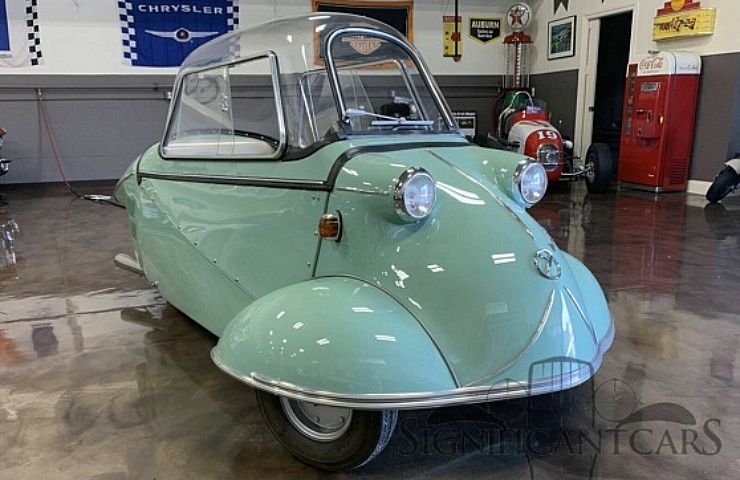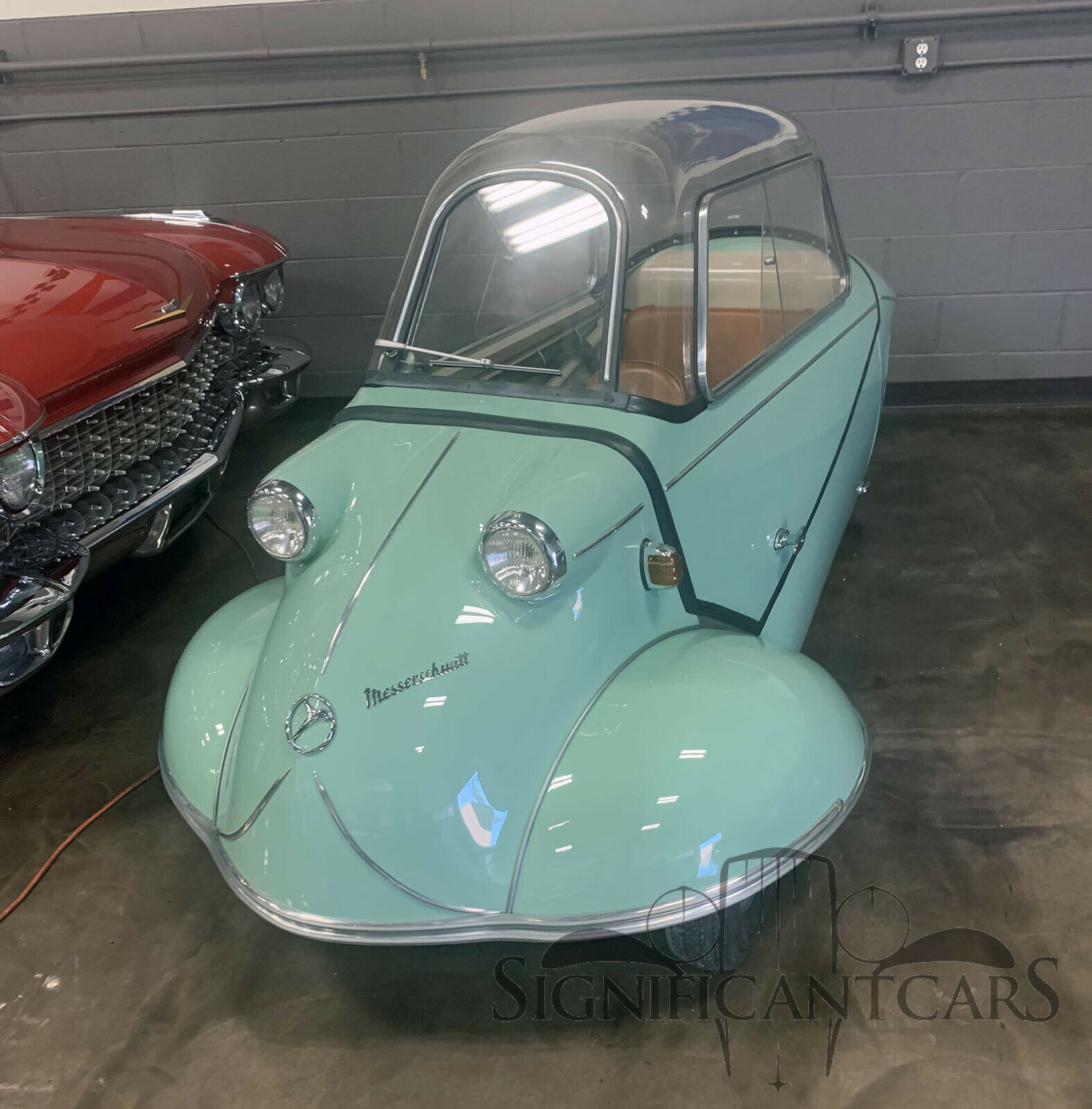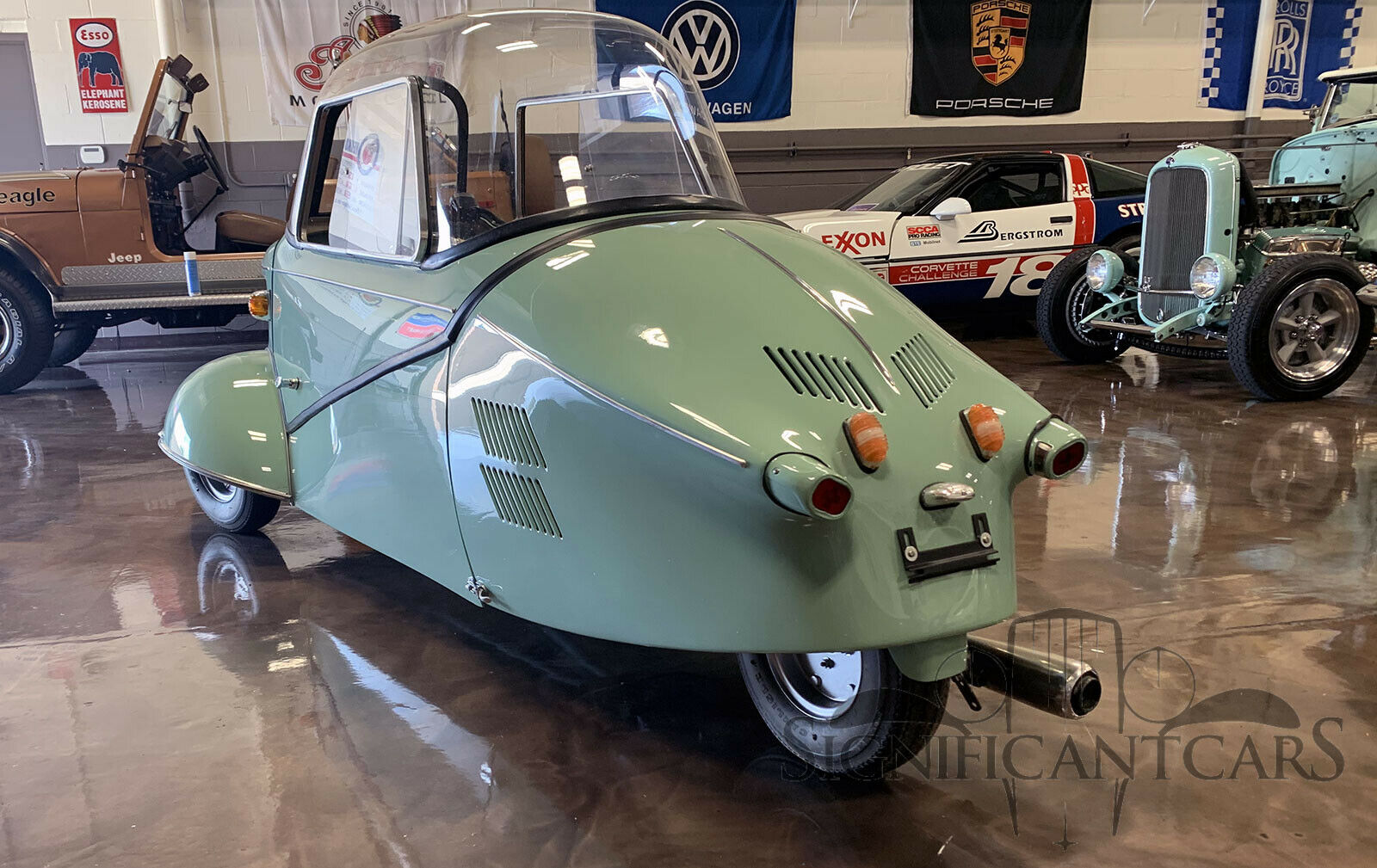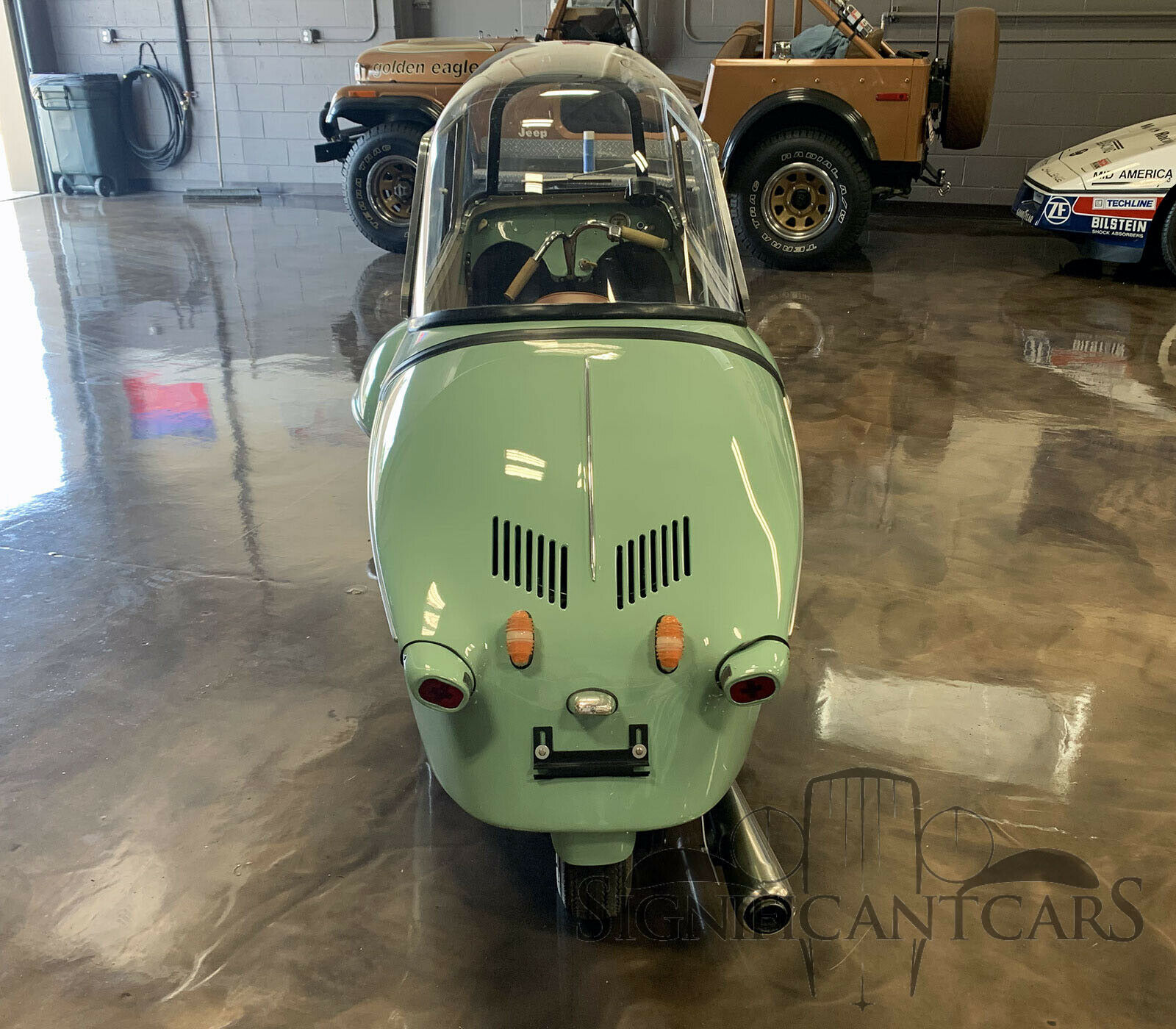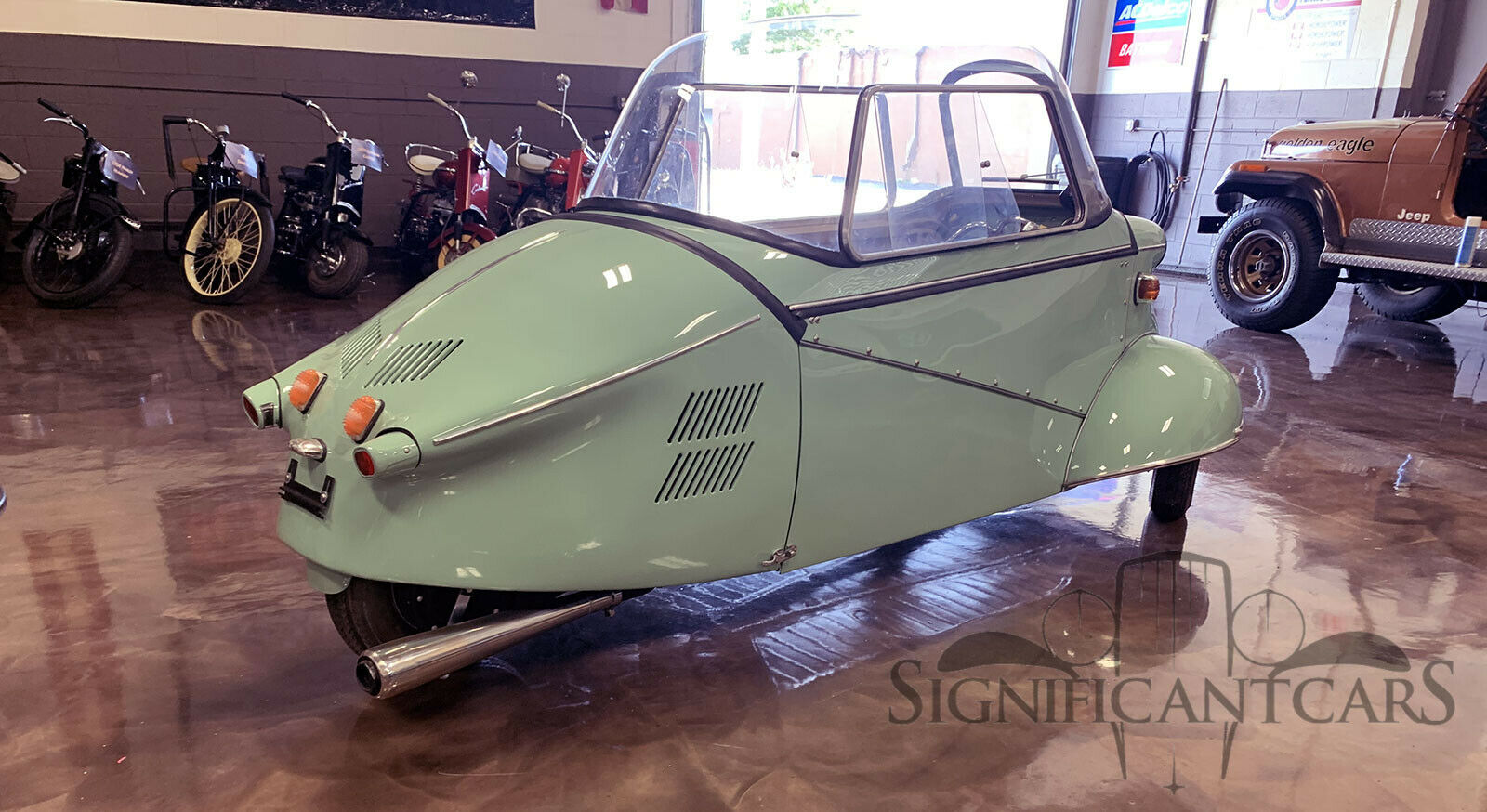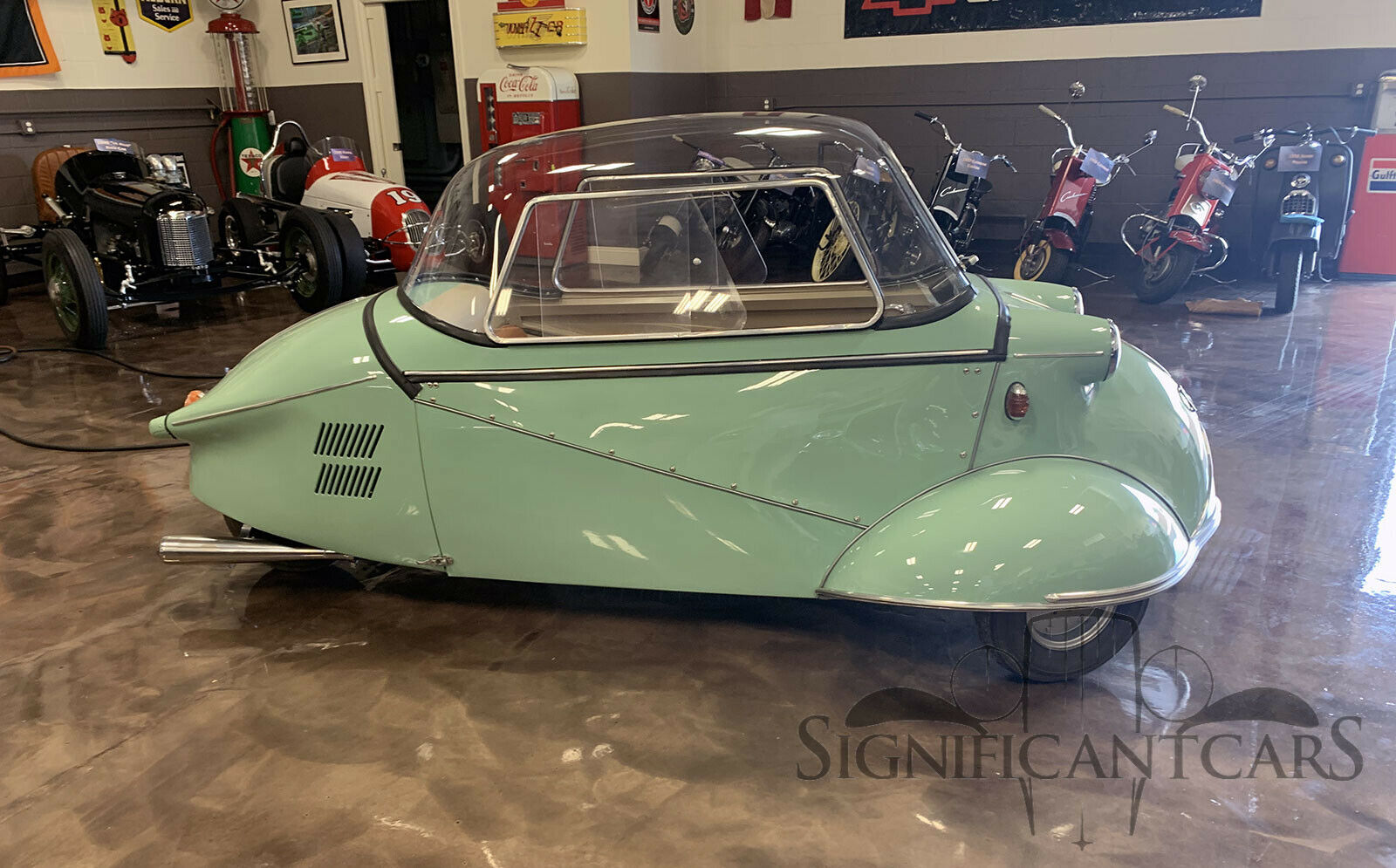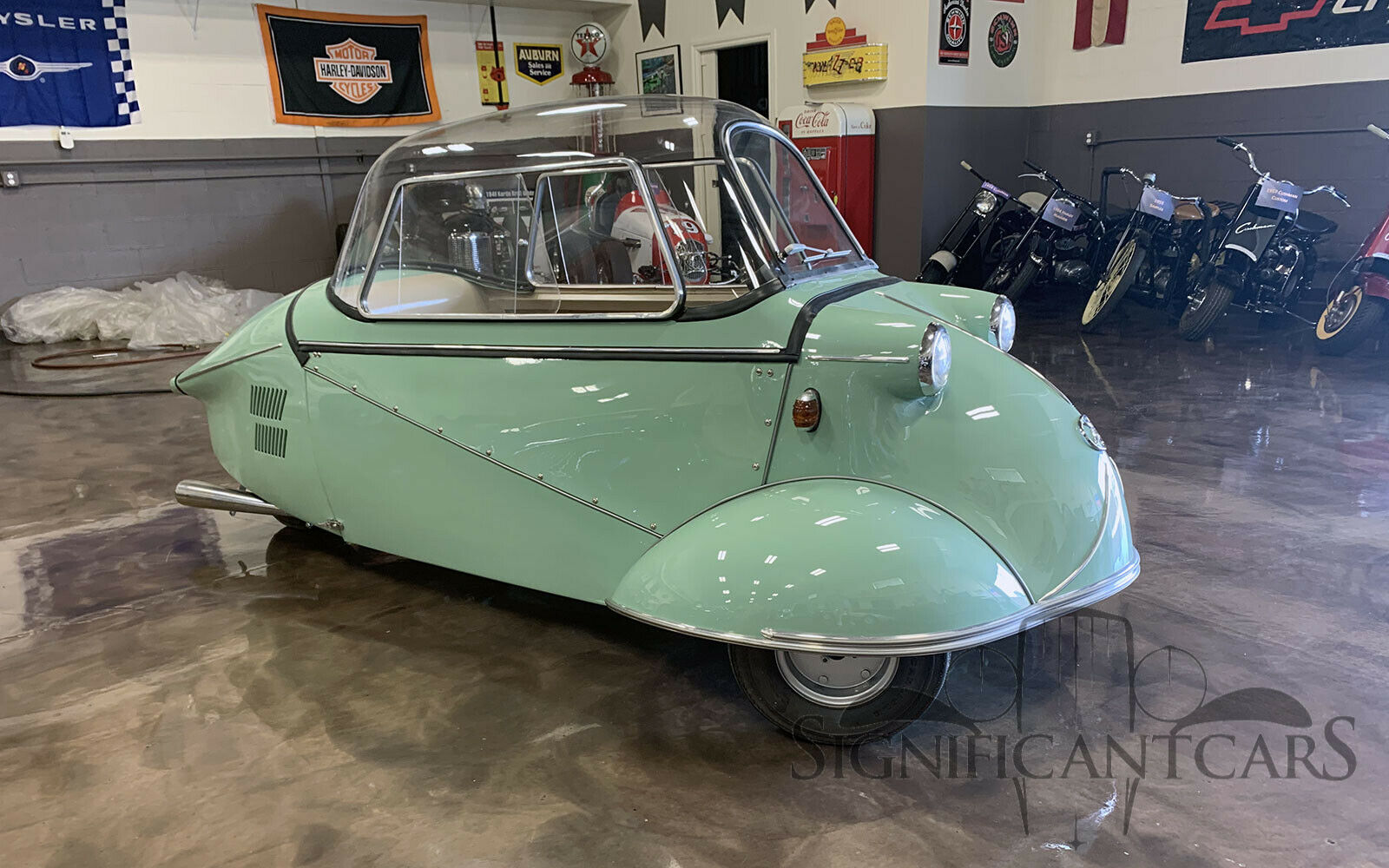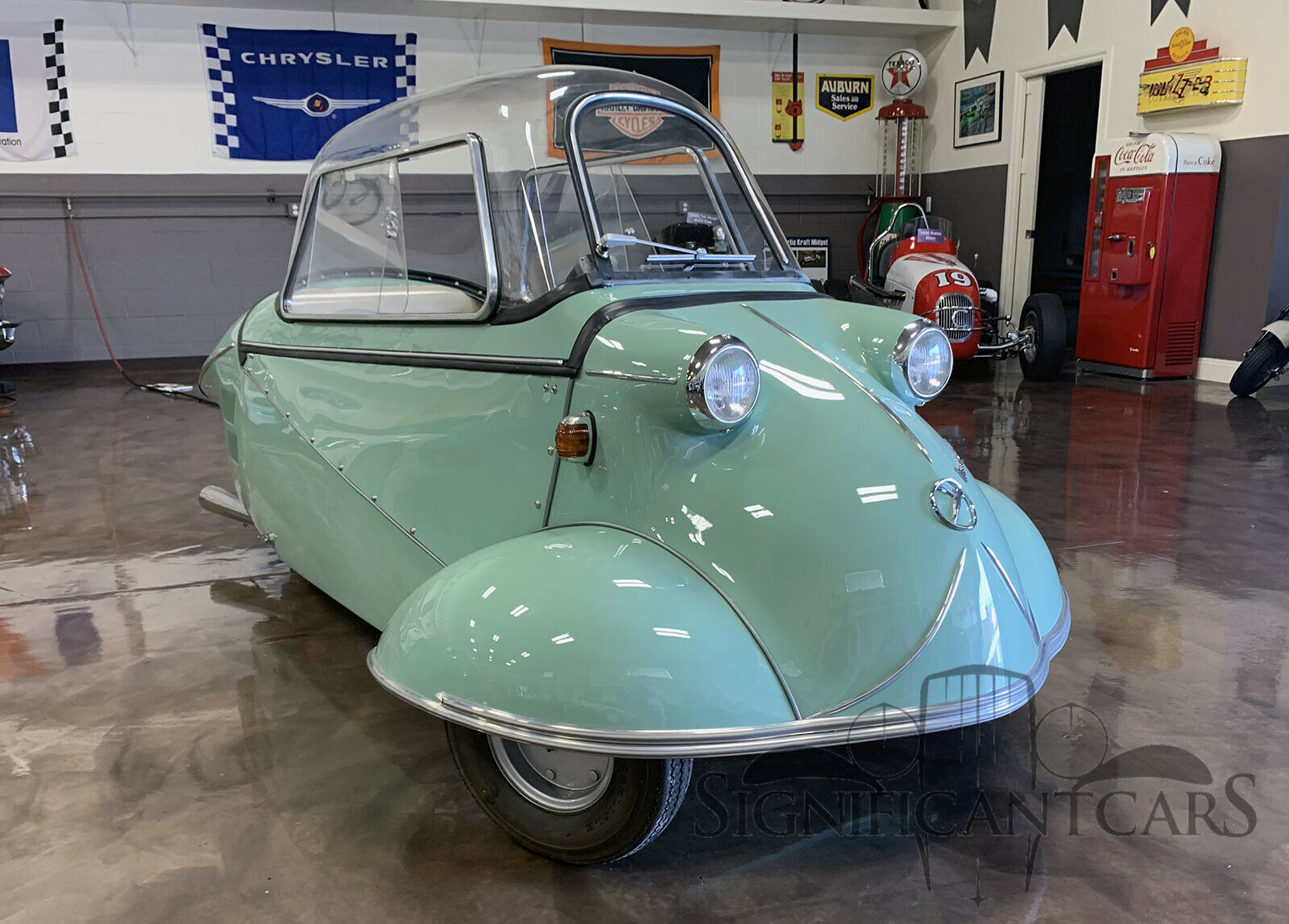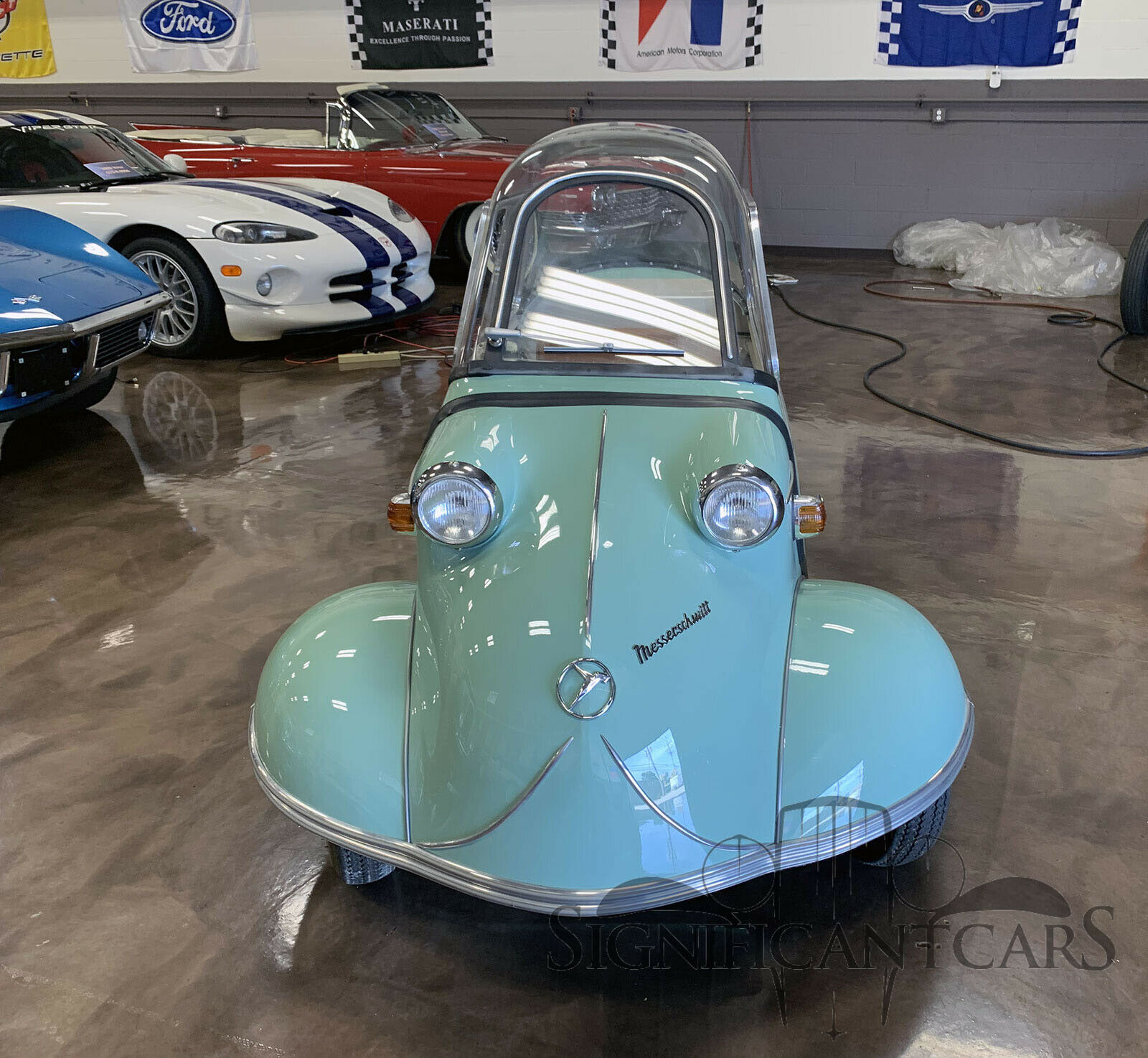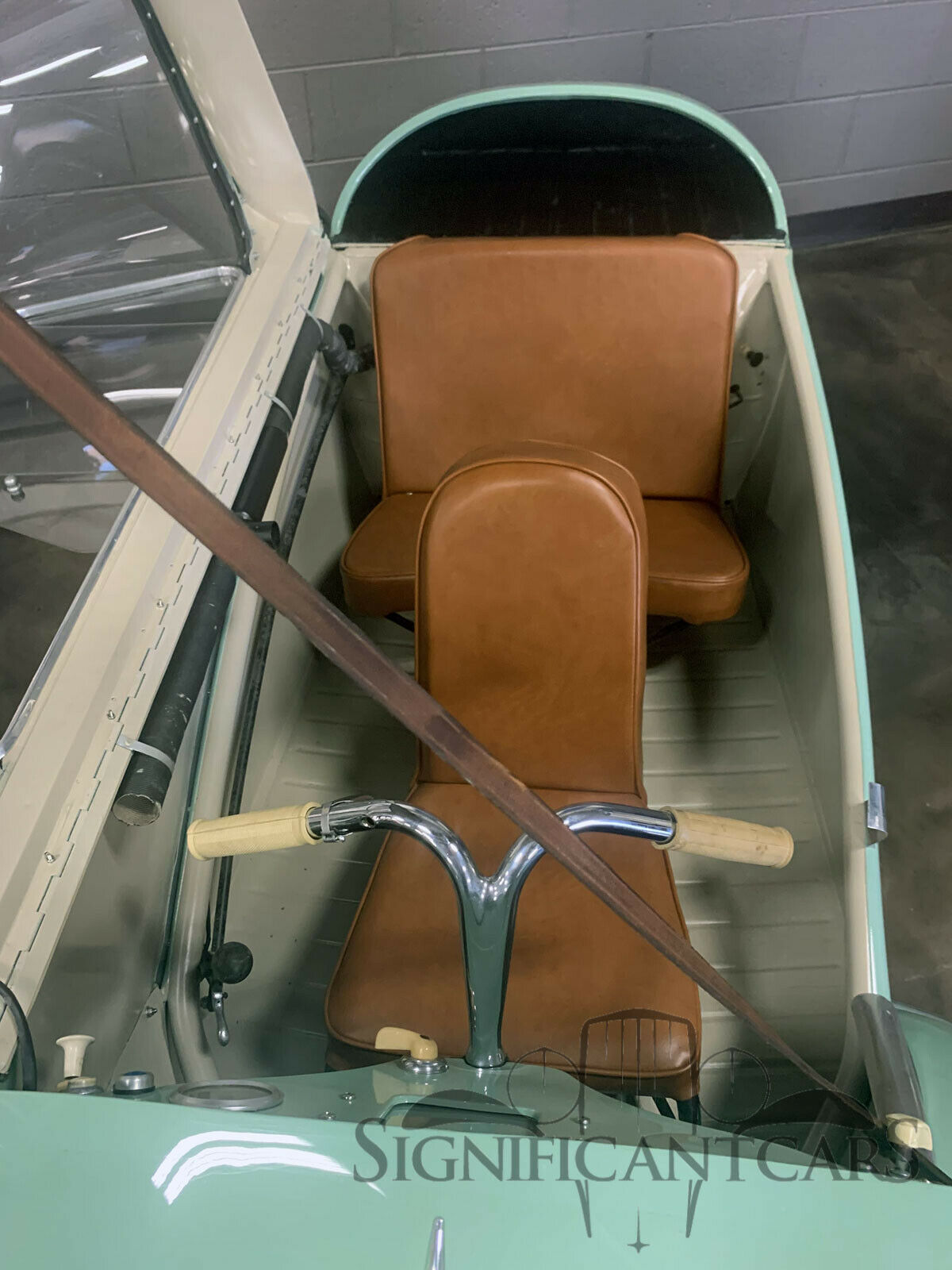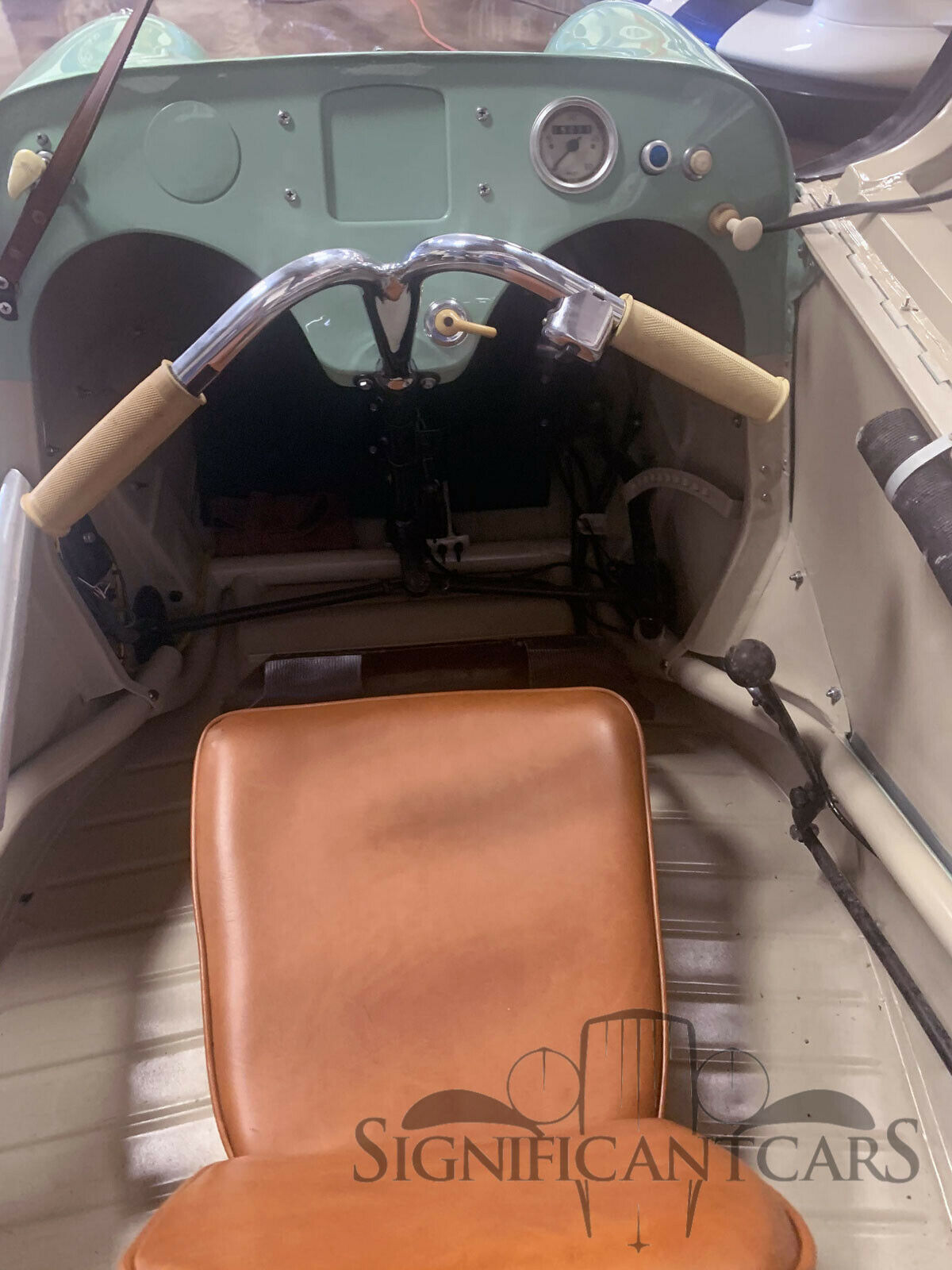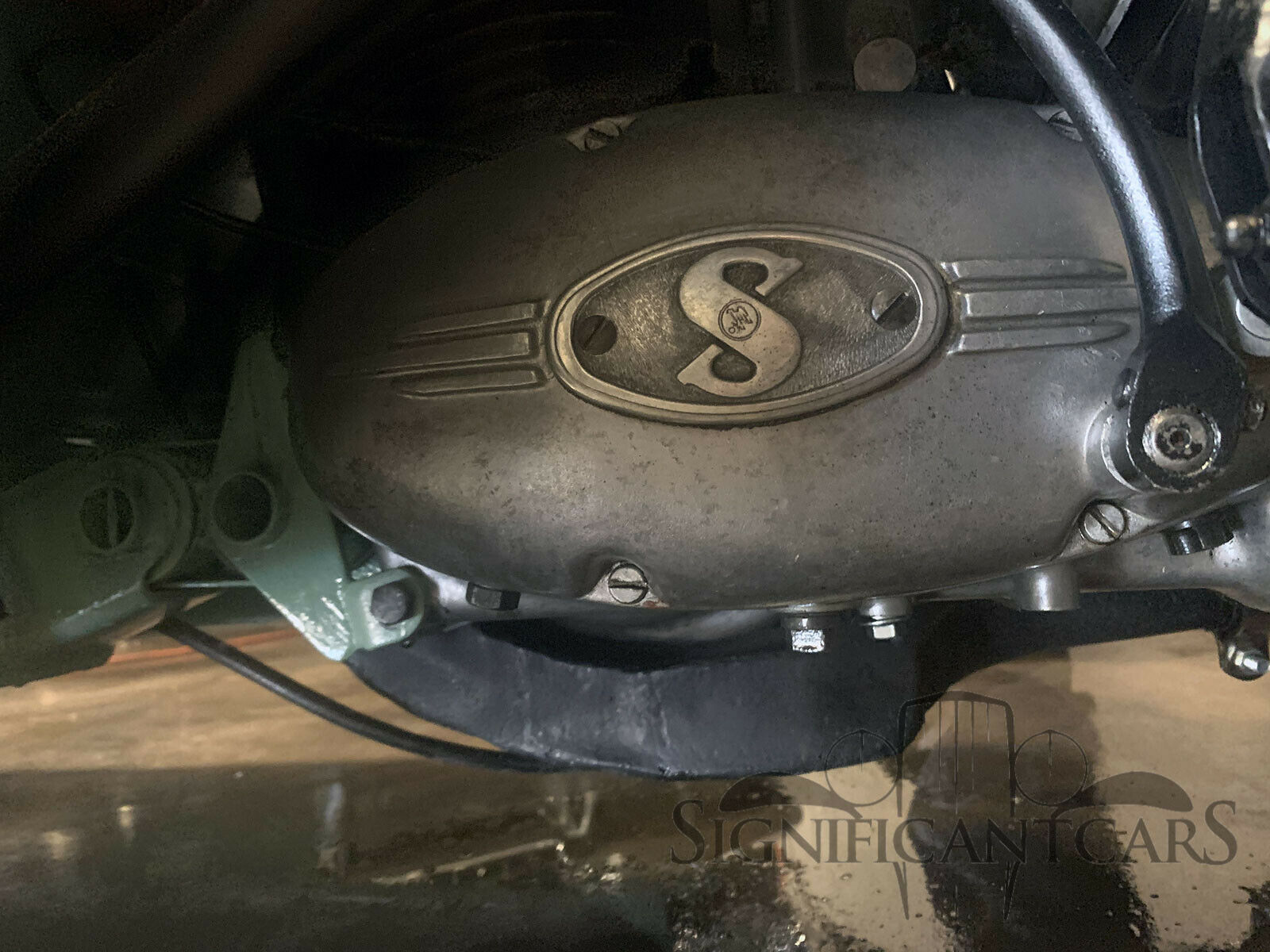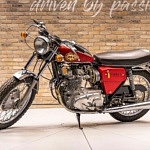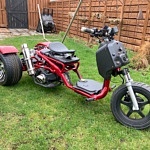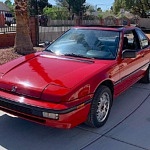Electric scooters and odd personal transport devices are everywhere in 21st-century cities. But 70 years ago, the adorable Messerschmitt KR 175 had the same idea. The three-wheeled, two-seat Kabinenroller (“scooter with a cabin”) offered efficient, stylish mobility for one person. Or two, if you squeeze in.
A rare and beautifully restored example of the KR 175 is now for sale on eBay. The model offered an incredible combination of 123-mpg fuel economy and a top speed of 56 miles per hour.
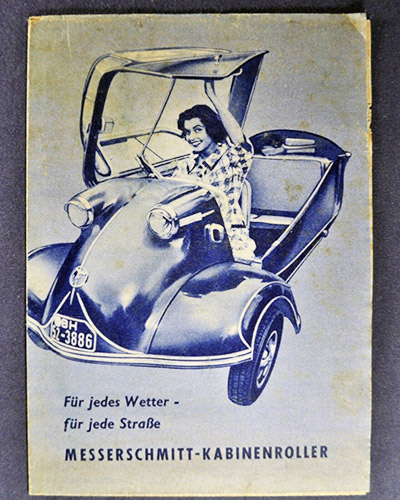
A 1955 Messerschmitt brochure is also for sale on eBay. The slogan translates to, “For every weather, for every street.”
Messerschmitt KR 175 Microcar History
In the years after the Second World War, Messerschmitt—a German aircraft manufacturer—was not allowed to build planes. But the firm needed to keep its factories humming.
Aircraft engineer Fritz Fend brought his Kabinenroller concept to Messerschmitt, where the company received it with open arms.
Messerschmitt built two generations of the Kabinenroller. The KR 175, the original model, was produced from 1953 to 1955.
Messerschmitt’s more successful KR 200 followed in 1955. The company returned to building aircraft by 1956. But Fend continued building his microcars through 1964.
Improving the Messerschmitt Bubble Car
The KR 175 was more than a little rough around the edges when it first rolled off the line in February 1953. The Microcar Museum says:
“The suspension was very hard, it was noisy and rattled, and the hand clutch didn’t come off well in practice.”
Messerschmitt tweaked the KR 175 as cars rolled off the assembly line. By the time that summer rolled around, the company had implemented 70 modifications. KR 175 production ended in March 1955.
The basic rear-engine architecture, monocoque chassis, and bodywork carried between Messershmitt’s two models.
- The KR 175 featured a 173cc two-stroke single-cylinder Fichtel & Sachs engine. Its tiny thumper pumped out nine horsepower.
- The KR 200 stretched its legs with a 191cc engine. It delivered a whopping 10.2 hp.
Messerschmitt was not alone. The other most notable three-wheel microcars of the era include the Iso Isetta (1953-1956), BMW Isetta (1955-1962), and the original teeny-tiny Peel P50 (1962-1965).
How Fast is the Messerschmitt KR 175 Kabinenroller?
The Bubbletop KR 175 is a slick little critter with bodywork that draws inspiration from nature.
Aerodynamic drag is minimized with smooth flowing lines and a fish-like tapered tail. With ideal conditions, it could reach highway speeds past 50 miles per hour. That, of course, depends on tailwinds and easy elevation changes.
Messerschmitt KR 175 for Sale on eBayMotors
The magnificent plexiglass-domed 1955 Messerschmitt KR 175 currently for sale on eBayMotors is a sterling example. It features a period-correct seafoam green exterior with tan upholstery.
The seller, SignificantCars of Indianapolis, Ind., states:
“This exceptional example was just fully restored by Marque Experts and is as near perfection as it can be accomplished. The car runs and drives perfectly and is also ready for the most demanding Concours.”
The Messerschmitt KR 175 is listed with a Buy-It-Now price of $59,500.00. That might sound like a lot for a tiny nine-horsepower bubble car.
But that would overlook the KR 175’s outsized significance in European post-war automotive history. Besides, the KR 175 on eBay is in pristine condition and extremely rare. Only about 50 examples of the Messerschmitt KR 175 have survived, according to the Microcar Museum.
Miraculously, eBay has hundreds of vintage and classic parts for Messerschmitt microcars.

